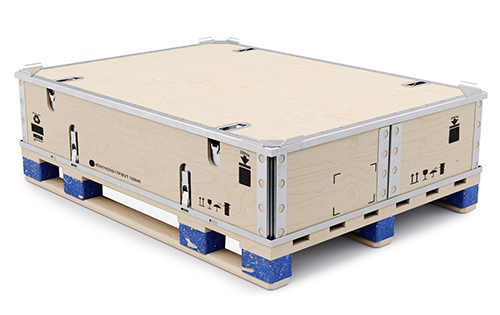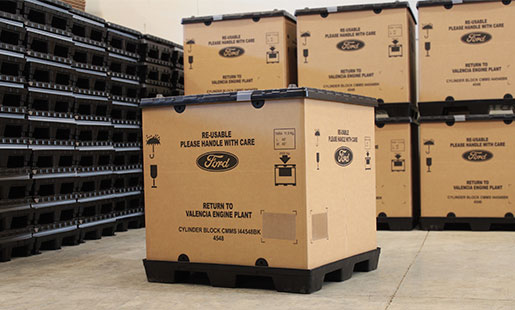Top quality in Every Mold: Plastic Container Manufacturer Experience
Discover the Value of Industrial Product Packaging Recycling: Specialist Insights
It is vital to recognize the importance of reusing commercial product packaging to minimize the negative consequences on our earth. In this conversation, we will delve right into the professional insights on this topic, discovering the advantages of reusing commercial packaging, professional tips for reliable recycling, the difficulties included, and the future leads and developments in this field.
Ecological Influence of Industrial Product Packaging

Another ecological influence of industrial packaging is the deficiency of natural deposits. The manufacturing of product packaging materials calls for considerable amounts of energy, water, and resources. This removal and usage of resources contribute to deforestation, water shortage, and the destruction of ecological communities. Furthermore, the production process of packaging products commonly involves the use of harmful chemicals that can contaminate air, dirt, and water, posturing a threat to human wellness and the environment.
To mitigate these environmental influences, it is crucial to focus on lasting packaging solutions. This consists of embracing materials that are conveniently recyclable, reducing packaging waste through efficient style, and advertising the usage of renewable resources. Recycling programs must be implemented to guarantee that industrial packaging materials are diverted from garbage dumps and offered a 2nd life. By addressing the environmental influence of industrial product packaging, we can relocate in the direction of a more lasting and accountable technique to product packaging and add to the preservation of our planet for future generations.
Advantages of Recycling Industrial Packaging
Recycling commercial packaging provides countless advantages, both for the setting and for organizations looking for to embrace lasting techniques. Among the key benefits of recycling is the reduction in waste sent out to garbage dumps. By reusing product packaging materials such as cardboard, plastics, and steels, business can lessen their environmental impact and preserve valuable resources.
Reusing commercial packaging also aids to preserve energy. They can be refined and reused rather than being made from raw products when materials are recycled. This decreases the energy required for transport, processing, and extraction. Furthermore, recycling decreases greenhouse gas exhausts connected with the production of brand-new packaging products.
One more benefit of reusing industrial product packaging is the capacity for expense financial savings. By implementing reusing programs, organizations can lower garbage disposal prices and possibly create income by offering recyclable materials. Recycling can additionally improve a firm's public picture and attract environmentally mindful customers that value lasting practices.
Additionally, reusing commercial packaging can add to a round economic situation. By reusing materials and incorporating them back right into the manufacturing procedure, organizations can create a closed-loop system that minimizes the need for virgin materials and promotes source performance.
Specialist Tips for Effective Industrial Packaging Recycling
To enhance the efficiency of industrial product packaging recycling, specialist expertise and methods are necessary. Industrial product packaging is created to safeguard products throughout transport and storage space, and recycling it can assist decrease waste and preserve sources. Here are some professional tips for efficient industrial packaging reusing:
Style for recyclability: When selecting packaging products, consider their recyclability. Select products that are widely approved by recycling facilities and can be quickly refined into brand-new items - bulk container recycling. Avoid using mixed materials or intricate packaging styles that are hard to separate and reuse.
Implement a reusing program: Establish a detailed recycling program that consists of clear standards for disposing and sorting of product packaging materials. Educate staff members about the relevance of recycling and provide correct training on how to reuse effectively.
Companion with recycling centers: Collaborate with regional recycling facilities to recognize their approval criteria and demands. Establish a partnership with a reliable recycling companion that can handle your industrial packaging waste efficiently.
Minimize packaging waste: Explore ways to minimize product packaging waste by utilizing ingenious style methods, such as light-weight products and right-sizing packaging. By lowering the quantity of packaging used, you can reduce the environmental influence and make recycling much easier.
Track and gauge reusing efforts: Screen and gauge your recycling efforts to examine the effectiveness of your program. Establish objectives and targets for raising recycling rates and continuously improve your recycling approaches based on the data gathered.
Obstacles in Industrial Packaging Recycling
Among the major challenges faced in commercial packaging recycling is the absence of standardized recycling techniques and infrastructure. Unlike home recycling, where there are clear guidelines and systems in place, industrial packaging recycling often lacks a consistent method. plastic container manufacturer. This lack of standardization makes it tough for businesses to navigate the reusing procedure effectively and successfully
One more challenge is the complexity of commercial product packaging products. Industrial packaging is usually made from a my explanation vast range of materials, such as plastics, steels, and composite products. Each product requires a various recycling procedure, which adds to the complexity and expense of recycling. Additionally, some industrial product packaging materials, such as laminated plastics, are not quickly recyclable, causing increased waste and environmental influence.
In enhancement, the sheer quantity of industrial packaging waste can be frustrating. Industries produce a significant amount of product packaging waste every day, and locating suitable recycling centers to handle this quantity can be a difficult task. This can cause product packaging materials being sent to land fill instead of being recycled.
Additionally, the absence of recognition and education about commercial product packaging recycling is another challenge. Many organizations are not totally familiar with the benefits of recycling their product packaging products or the available recycling alternatives. This absence of recognition brings about a missed opportunity to reduce waste and add to a more lasting future.
To get over these difficulties, it is critical for companies to interact with reusing organizations, government agencies, and industry associations to establish standardized recycling methods and framework. This will not just simplify the reusing procedure however likewise guarantee that even more product why not find out more packaging materials are diverted from landfills and recycled properly. In addition, elevating recognition and supplying education regarding commercial product packaging recycling can help companies comprehend the relevance of recycling and make informed decisions regarding their packaging choices.
Future Leads and Innovations in Industrial Packaging Recycling
With the challenges of standardized techniques and infrastructure in industrial packaging recycling, the focus currently moves towards checking out ingenious solutions and future leads to address these issues. As the need for sustainable product packaging continues to grow, the industry is seeing improvements in modern technology and procedures that intend to enhance reusing rates and minimize ecological impact.
One promising future possibility is the growth of smart product packaging products. These products are developed to have actually installed sensing units that can provide details regarding their structure and condition. By utilizing these sensors, recyclers can easily determine and arrange different sorts of packaging products, making the recycling process a lot more reliable and cost-efficient.
An additional cutting-edge solution is using advanced reusing technologies. Standard reusing techniques commonly encounter difficulties in efficiently reusing intricate packaging materials, such as multi-layered plastics. Advanced technologies, such as chemical recycling and pyrolysis, can damage down these products right into their standard parts, enabling a greater price of recycling.

Conclusion
To conclude, industrial packaging recycling plays an important function in lowering environmental impact and advertising sustainability. By reusing commercial product packaging, companies can gain from cost savings, lowered waste, and improved brand name photo. Obstacles check out here such as contamination and absence of understanding require to be attended to for efficient recycling. The future potential customers of industrial product packaging recycling are encouraging, with advancements in innovation and innovations targeted at boosting reusing performance and lowering waste.
Reusing programs need to be implemented to make sure that industrial packaging products are drawn away from landfills and offered a 2nd life. By addressing the ecological influence of commercial packaging, we can relocate towards a more accountable and lasting method to packaging and add to the conservation of our world for future generations.
Minimize packaging waste: Explore methods to reduce packaging waste by utilizing innovative style techniques, such as lightweight materials and right-sizing product packaging. Furthermore, increasing recognition and offering education about commercial product packaging recycling can assist organizations recognize the relevance of reusing and make educated choices concerning their packaging options.
Traditional recycling techniques typically encounter obstacles in efficiently recycling intricate packaging materials, such as multi-layered plastics.